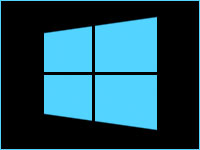
Windows 7 is the most popular desktop operating system, with 44.73 percent market share, according to Net Applications’ March report. Windows 8 is not even a close second — old standby Windows XP is.
Though Microsoft released Windows 8 with great fanfare last October, it hasn’t developed much traction so far. In fact, it trails behind Vista — an OS not known for its legions of loyal fans. document.getElementById(“na635004421287371351”).src=”http://www.netmarketshare.com/report.aspx?qprid=10″+String.fromCharCode(38)+”qptimeframe=M”+String.fromCharCode(38)+”qpsp=170″+String.fromCharCode(38)+”qpch=350″+String.fromCharCode(38)+”qpdt=1″+String.fromCharCode(38)+”qpct=3″+String.fromCharCode(38)+”qpcustomd=0″+String.fromCharCode(38)+”qpcid=fw424435″+String.fromCharCode(38)+”qpf=16″+String.fromCharCode(38)+”qpwidth=600″+String.fromCharCode(38)+”qpdisplay=1111″+String.fromCharCode(38)+”qpmr=10″+String.fromCharCode(38)+”site=”+window.location.hostname
Slowing Growth
Windows 8 has achieved a 3.17 percent share, behind Vista’s 4.99 percent, according to Net Applications. Windows 8 is still growing, of course: That 3.17 percent share is up from 2.67 percent in February.
However, the pace at which it is growing has clearly slowed. Following its launch at the end of last year, Windows 8 was posting growth in the 50 percent range. Granted, in the first few months, blockbuster growth is expected.Just a few months after its release, though, its growth rate has plunged to the high teens.
Consumer vs. Corporate
There is much to the story that the Net Applications numbers don’t tell, Laura DiDio, principal at ITIC told the E-Commerce Times.
For example, it is hard to see how much of Windows 8’s falling growth rate is tied to corporate users vs. consumer users. If there is a large drop-off among corporate users, that may be more indicative of the slowdown in PC shipments than lack of enthusiasm over Windows 8, she pointed out.
Also, “we are in the second quarter now, which is traditionally pretty slow,” noted DiDio. “Usually, most companies make their upgrades in Q4 or Q1.”
Such explanations only go so far, though, DiDio acknowledged. “Clearly this is not what Microsoft had been hoping for when it launched Windows 8 last year.”
The slower-than-hoped-for growth could well be due to resistance that became apparent soon after Windows 8 was unveiled: For some people, it is just too big a jump in functionality, and they won’t make the leap until they have a compelling reason to do so.
“People don’t switch an OS unless they really have to or really want to,” DiDio said.
The Tablet Problem
Another issue — or perhaps in retrospect, mistake — is that there is a separate OS for tablets, DiDio said.
“People are definitely shifting to tablets, and I think a case can be made that Microsoft made a misstep having two versions of Windows 8.”






















































Social Media
See all Social Media